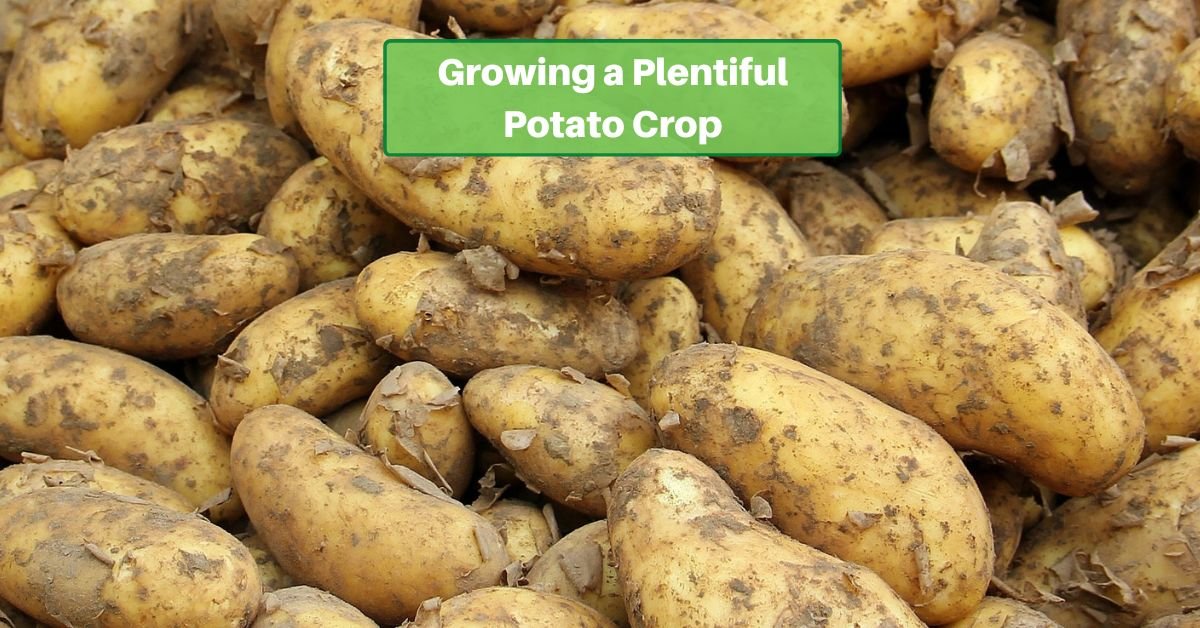Growing potatoes in your garden opens a doorway to a rewarding harvest and an opportunity to practice and embody eco-conscious gardening. This staple crop, with its versatile culinary uses, can thrive in various climates when given proper care and attention. Let’s delve into the foundational steps of cultivating potatoes, focusing on timing, soil preparation, and planting with sustainability at the forefront.
Timing Your Planting with Nature’s Rhythms
Planting at the optimal time has a significant influence on the success of your potato crop. Potatoes favor cool soil and moderate temperatures for the initial stages of growth. That makes early spring, a few weeks before the last expected frost, an ideal period for planting in most regions. This timing harnesses the natural cooling and moistening of the soil, reducing the need for artificial cooling or excessive watering.
An additional planting in late summer can yield a fruitful late autumn or early winter harvest in milder climates.
Preparing the Soil: The Heart of Eco-Friendly Gardening
Preparing your garden to welcome potato plants begins with enhancing the soil structure and fertility. Start by loosening the soil to about 8-10 inches deep to facilitate root growth and drainage, removing stones and debris that could hinder the tubers’ development.
Incorporating organic matter, such as compost or well-rotted manure, enriches the soil with nutrients and improves its water-holding capacity, fostering a living soil rich in microorganisms. This practice feeds your potato plants and contributes to the larger ecosystem’s health by promoting biodiversity below the ground.
Balancing soil nutrition with a slow-release, organic fertilizer ensures your potatoes receive the nourishment they need without the environmental impact of chemical fertilizers. Testing your soil can inform you of specific nutrient needs, allowing for targeted amendments that reduce waste and runoff.
Embracing the Sun: The Role of Sunlight in Potato Growth
Potatoes, like many plants, thrive under the generous gaze of the sun. Ensure your potato plants receive at least 6-8 hours of direct sunlight daily so they can develop properly. Sunlight drives photosynthesis, providing the energy needed for growth, and helps prevent diseases by keeping the foliage dry and healthy.
Positioning your potato garden in a spot that maximizes sunlight exposure is a simple yet effective strategy to boost your crop’s health and yield.
Get Seed Potatoes Online
The Art of Planting Potatoes
A day before planting, cut larger seed potatoes into pieces with at least one or two eyes, or buds. This allows the cuts to harden over, reducing the risk of rot.
Remember to consider the potato’s need for space and depth. Planting in trenches or raised beds can facilitate drainage and prevent waterlogging, which is crucial in avoiding diseases. A depth of about 4-6 inches and spacing of 12-15 inches between plants is ideal. This minimizes the competition for nutrients, adhering to principles of sustainable plant density.
Water Wisdom: Sustainable Irrigation Practices
Potatoes require consistent moisture, especially during the critical phases of flowering and tuber formation. However, overwatering can lead to issues like rot and disease. A drip irrigation system or soaker hoses can reduce water usage and target water delivery directly to the roots, where it’s most needed.
Mulching plays a dual role in moisture retention and temperature regulation. A layer of organic mulch, such as straw or grass clippings, can conserve water, reduce the need for frequent watering, and keep the soil temperature stable. At the same time, it adds organic matter back into the soil as it decomposes.
Care and Maintenance
As your potatoes grow, they will benefit from gentle care and attention to ensure their environment remains conducive to their development. One traditional method of care is hilling, which involves mounding soil around the base of the plants as they grow. This helps prevent the tubers from being exposed to sunlight, which can cause them to turn green and become toxic. It also encourages the growth of more tubers. Using soil enriched with organic matter for hilling supports the continued health and productivity of the plants.
Pest and disease management requires a proactive and preventive approach. Regularly inspect your plants for signs of distress and employ natural remedies and barriers to mitigate issues before they escalate. Companion planting, for instance, can naturally deter pests. Crop rotation between seasons can prevent disease build-up in the soil.
The Right Time to Harvest
Knowing when to harvest potatoes is crucial in capturing their best flavor and texture. For early, or “new” potatoes, the right moment comes when the plants flower, usually about ten weeks after planting. These tender, small potatoes are a delicacy but don’t store well and should be consumed soon after harvesting.
For the main crop, which will provide storage potatoes, timing is everything. The potatoes are ready when the foliage starts to yellow and die back, signaling that the tubers have matured. Wait a week or two after the foliage has died back to allow the skin to toughen, making the potatoes more durable for storage.
Harvesting with Care
Harvesting potatoes requires a gentle touch to avoid bruising or damaging the tubers. Carefully use a garden fork to loosen the soil around the plants, then lift the potatoes by hand. This method minimizes harm to the potatoes, preserving their quality.
Once harvested, resist the temptation to wash your potatoes. Instead, let them dry and brush off any soil. Their natural protective layer will help preserve them; you wouldn’t want to wash it away!
Curing and Storage
Curing potatoes is a crucial step for those intended for storage. This process involves letting the potatoes sit in a cool, dark, and well-ventilated place for about two weeks. Curing heals minor cuts and thickens the skin, extending the potatoes’ storage life. A sustainable approach involves selecting a suitable curing environment, such as a garage or cellar, that maintains a consistent temperature and humidity level.
Keep cured potatoes in a dark, cool, and humid place for long-term storage. Properly stored, many potato varieties can last for months, reducing waste and providing you with a source of food throughout the winter.
Wooden crates, mesh bags, or even paper bags can be effective storage solutions. They allow air circulation while keeping the potatoes in darkness. Regularly inspect your stored potatoes for signs of spoilage or disease and remove affected tubers to prevent the spread.
Growing potatoes in your home garden is an excellent means to produce food. By following best practices from soil preparation to post-harvest care, you can contribute to a sustainable food system that respects the earth’s natural cycles and conserves resources.










